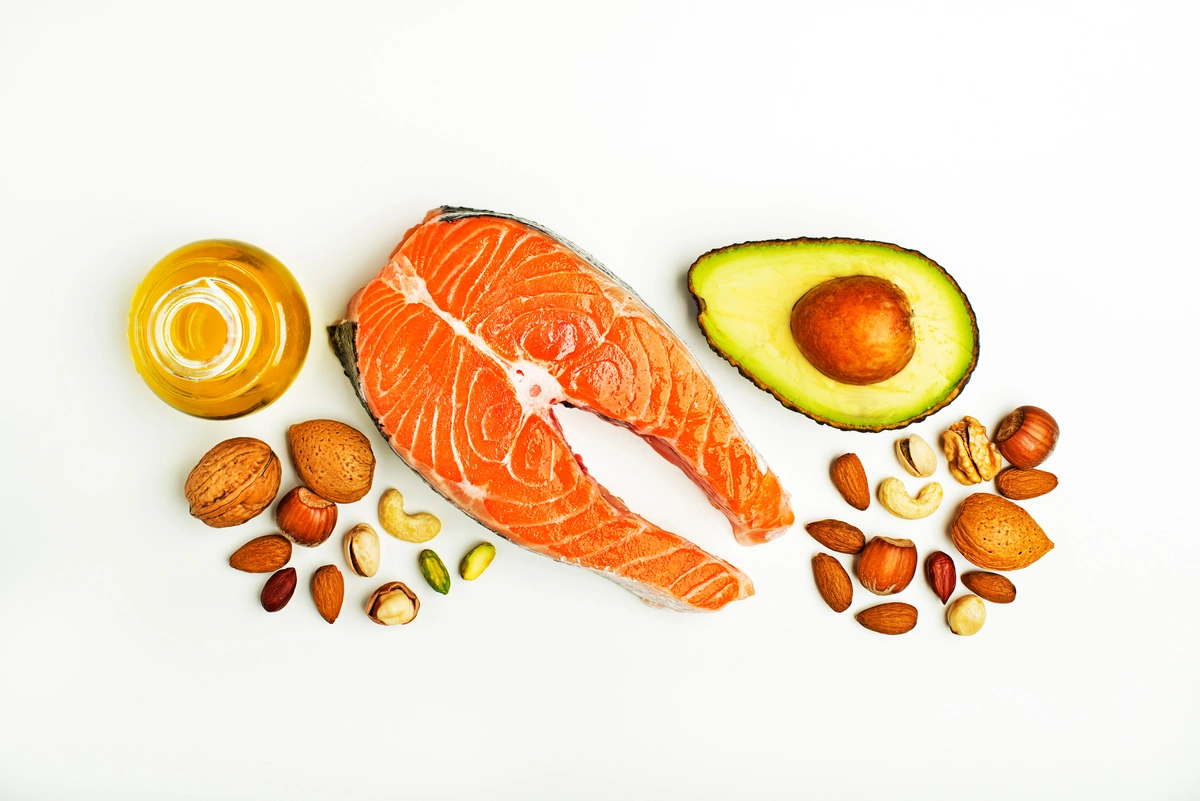
The Connection Between Bile, Diet, and Elevations in Bilophila and Bacteroides
A common pattern of microbiome imbalance is elevated Bilophila and Bacteroides. The research associates this pattern with a western diet, higher in fat and protein from animal sources. Bile may be the reason behind this association. While we are learning more about the relationship between bile and the microbiome, what we have learned so far indicates it is very important, not just for the microbiome but also for health and disease. So let’s talk about bile.
The liver is responsible for making bile from cholesterol. Bile is composed primarily of bile acids, cholesterol, fatty acids and phospholipids. In humans, the primary bile acids are cholic acid and chenodeoxycholic acid. These acids will be attached to the amino acids, taurine or glycine. Bile is stored in the gallbladder and released during a meal into the small intestine, where it will aid in the digestion and absorption of fat and fat-soluble vitamins (like vitamin A, D, and E) by acting as a detergent.
Bile acids are not just for digestion and absorption. Bile acids also send important signals to the small intestine and the liver that impact the health of those organs. In the small intestine, bile acids play a role in modulating inflammation, intestinal permeability, and protecting the small intestine from bacterial overgrowth. In the liver, bile acids play a role in regulating synthesis of bile acids, cholesterol balance, and glucose and fat metabolism.
About 95% of the bile acids will be reabsorbed at the end of the small intestine. 5% will continue to the large intestine where they will interact extensively with the microbiome.
The microbiome can modify bile acids, creating what are called secondary bile acids. We are still learning about the impact of secondary bile acids. Many possess antimicrobial activity, so they may be used as a sort of weapon of microbial warfare. This may help prevent overgrowths of pathogenic or opportunistic bacteria in the large intestine. Some secondary bile acids are anti-inflammatory, while others are inflammatory.
The primary modification bacteria make to bile acids is removing the glycine or the taurine in a process called deconjugation. Some bacteria will then use glycine or taurine as a nutrient. Bilophila, in particular, seems to thrive on taurine and it has a preference to deconjugate taurine bile salts. Many different bacteria are capable of deconjugation including beneficial bacteria like Bifidobacterium and Lactobacillus. But Bacteroides plays a major role in deconjugation. After deconjugation, other bacteria can further modify the bile acids and some can even create new types of conjugated bile acids, creating an extensive pool of new compounds that can interact with the microbiome and the host. Further research is needed to understand the full impacts of these secondary bile acids.
Based on the research, it appears that more bile may lead to more Bilophila and Bacteroides. Research in mice shows several connections between diet, bile acids, and Bilophila and Bacteroides. It appears that animal fat, saturated fat, and dairy-based fats are associated with more Bilophila, possibly by increasing the amount of taurine conjugated bile acids. Diets higher in animal protein are also associated with more Bilophila, possibly due primarily to the fat content of these diets. Higher fat and higher protein diets from animal sources are also associated with higher amounts of Bacteroides.
The standard recommendation to reduce Bilophila and Bacteroides is a plant-based diet. It is important to remember that the primary research has been done in mice, which have different bile acids than humans, so in clinical practice, we see a variety of different dietary strategies working for patients.
If Bacteroides is high and not Bilophila, avoiding dairy may not be that important. In these cases, simply adding more plant foods and not necessarily avoiding all animal based foods may work. Some individuals may need to reduce animal products, particularly meat that is higher in fat. Lean chicken and turkey may be acceptable.
If Bilophila is also elevated, avoiding dairy may be necessary in addition to avoiding or reducing animal products. Some individuals are able to keep Bilophila in check by simply avoiding high fat dairy foods or simply by reducing the frequency of dairy consumption. Anecdotally, the combination of dairy and higher amounts of refined sugar in the diet may aggravate Bilophila overgrowths. In these cases, reducing refined sugar may be sufficient to modulate Bilophila levels without adjusting dairy consumption.
Another dietary recommendation to reduce Bilophila is to reduce sulfur-based preservatives in food. Bilophila may have a preference for taurine due to its sulfur content. Some practitioners suggest minimizing total sulfur in the diet to reduce Bilophila. However, a low sulfur diet is fairly restrictive, reducing many foods that may have other benefits for the microbiome. A low sulfur diet has not shown to reduce Bilophila, but more research is needed.
To personalize a nutrition strategy, consider making one dietary change at a time and retesting to track progress.
For a variety of reasons, decreasing Bacteroides and Bilophila through diet alone may not be achievable. The addition of specific nutraceuticals may be able to further reduce these bacteria.
For Bacteroides, beta glucan can be effective. Beta glucan is a type of fiber found in oats, barley, sorghum, rye, rice, and mushrooms. However, not all beta glucans are the same and the research is very mixed. Some beta glucans increase Bacteroides while others decrease it. Beta (1,3/1,6) D-Glucan derived from yeast is the most effective at reducing elevated Bacteroides.
For Bilophila, inulin may be effective at reducing levels. Inulin is a prebiotic found in foods like asparagus, garlic, onions, leeks and Jerusalem artichokes. It is also readily available as a supplement. Research shows that 12 grams a day of inulin can decrease Bilophila. However, inulin can increase Bacteroides and some Proteobacteria species, so it should be used with caution. In clinical practice, chamomile, when consumed as a tea, tincture or capsule, can help decrease Bilophila.
Before starting any new supplements, please talk to your health care practitioner.
For some, managing Bacteroides and Bilophila levels can be challenging, even with dietary interventions and supplements. For these individuals, we need to consider issues higher up in the digestive tract that may result in higher than normal amounts of fat, protein or bile entering the large intestine driving elevations in Bacteroides and Bilophila.
The most common cause of this type of malabsorption is inflammation in the small intestine. Small intestine bacterial overgrowth (SIBO), celiac disease, and inflammatory bowel disease (IBD) are the most common causes of inflammation in the small intestine.
Other considerations for malabsorption are digestive insufficiency. So consider if you have enough stomach acid to effectively break down your protein or if your pancreas is releasing enough enzymes to break down fat and protein. Consider talking to your doctor about additional testing to further assess your digestive function and whether or not digestive bitters, apple cider vinegar, or digestive enzymes may be helpful in modulating your microbiome.
References
- Ramírez-Pérez O, Cruz-Ramón V, Chinchilla-López P, Méndez-Sánchez N. The Role of the Gut Microbiota in Bile Acid Metabolism. Annals of Hepatology. 2017;16:S21-S26. doi:10.5604/01.3001.0010.5672
- Guzior DV, Quinn RA. Review: microbial transformations of human bile acids. Microbiome. 2021;9(1):140. doi:10.1186/s40168-021-01101-1
- Song X, Sun X, Oh SF, et al. Microbial bile acid metabolites modulate gut RORγ+ regulatory T cell homeostasis. Nature. 2020;577(7790):410-415. doi:10.1038/s41586-019-1865-0
- Molinero N, Ruiz L, Sánchez B, Margolles A, Delgado S. Intestinal Bacteria Interplay With Bile and Cholesterol Metabolism: Implications on Host Physiology. Frontiers in Physiology. 2019;10. Accessed November 7, 2022. https://www.frontiersin.org/articles/10.3389/fphys.2019.00185
- Devkota S, Chang EB. Interactions between Diet, Bile Acid Metabolism, Gut Microbiota, and Inflammatory Bowel Diseases. Dig Dis. 2015;33(3):351-356. doi:10.1159/000371687
- Devkota and Chang - 2015 - Interactions between Diet, Bile Acid Metabolism, G.pdf. Accessed November 7, 2022. https://www.karger.com/Article/Pdf/371687
- Staley C, Weingarden AR, Khoruts A, Sadowsky MJ. Interaction of Gut Microbiota with Bile Acid Metabolism and its Influence on Disease States. Appl Microbiol Biotechnol. 2017;101(1):47-64. doi:10.1007/s00253-016-8006-6
- Duan R, Guan X, Huang K, et al. Flavonoids from Whole-Grain Oat Alleviated High-Fat Diet-Induced Hyperlipidemia via Regulating Bile Acid Metabolism and Gut Microbiota in Mice. J Agric Food Chem. Published online July 2, 2021. doi:10.1021/acs.jafc.1c01813
- Devkota S, Wang Y, Musch M, et al. Dietary fat-induced taurocholic acid production promotes pathobiont and colitis in IL-10−/− mice. Nature. 2012;487(7405):104-108. doi:10.1038/nature11225
- Collins SL, Stine JG, Bisanz JE, Okafor CD, Patterson AD. Bile acids and the gut microbiota: metabolic interactions and impacts on disease. Nat Rev Microbiol. Published online October 17, 2022:1-12. doi:10.1038/s41579-022-00805-x
- Ridlon JM, Kang DJ, Hylemon PB, Bajaj JS. Bile Acids and the Gut Microbiome. Curr Opin Gastroenterol. 2014;30(3):332-338. doi:10.1097/MOG.0000000000000057
- Ticho AL, Malhotra P, Dudeja PK, Gill RK, Alrefai WA. Bile acid receptors and gastrointestinal functions. Liver Research. 2019;3(1):31-39. doi:10.1016/j.livres.2019.01.001
- Dostal Webster A, Staley C, Hamilton MJ, et al. Influence of short-term changes in dietary sulfur on the relative abundances of intestinal sulfate-reducing bacteria. Gut Microbes. 2019;10(4):447-457. doi:10.1080/19490976.2018.1559682
- Fernandez-Julia PJ, Munoz-Munoz J, van Sinderen D. A comprehensive review on the impact of β-glucan metabolism by Bacteroides and Bifidobacterium species as members of the gut microbiota. International Journal of Biological Macromolecules. 2021;181:877-889. doi:10.1016/j.ijbiomac.2021.04.069
Categories: diet Tags: Bacteroides Bile Bilophila
